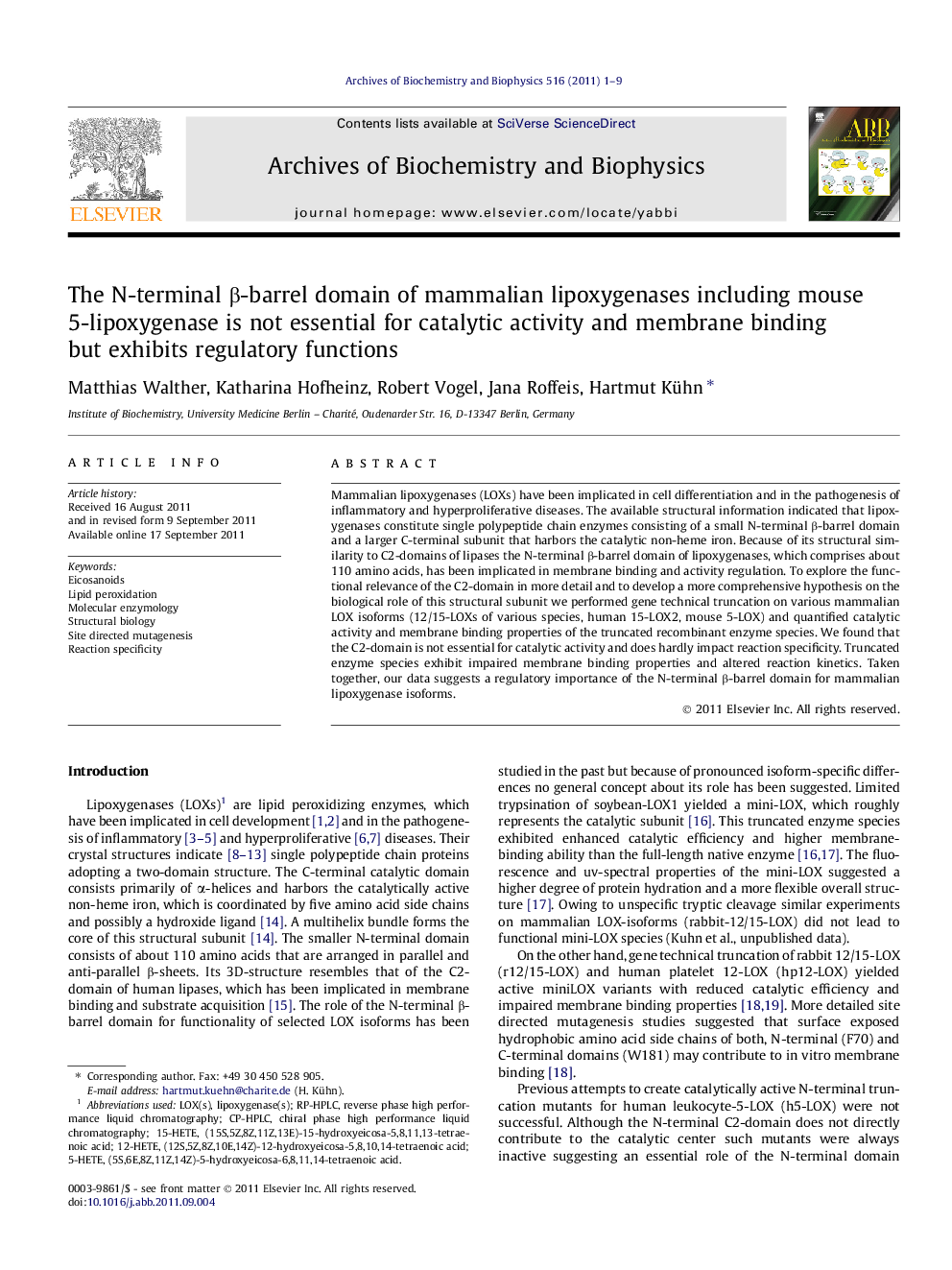| Article ID | Journal | Published Year | Pages | File Type |
|---|---|---|---|---|
| 1925639 | Archives of Biochemistry and Biophysics | 2011 | 9 Pages |
Mammalian lipoxygenases (LOXs) have been implicated in cell differentiation and in the pathogenesis of inflammatory and hyperproliferative diseases. The available structural information indicated that lipoxygenases constitute single polypeptide chain enzymes consisting of a small N-terminal β-barrel domain and a larger C-terminal subunit that harbors the catalytic non-heme iron. Because of its structural similarity to C2-domains of lipases the N-terminal β-barrel domain of lipoxygenases, which comprises about 110 amino acids, has been implicated in membrane binding and activity regulation. To explore the functional relevance of the C2-domain in more detail and to develop a more comprehensive hypothesis on the biological role of this structural subunit we performed gene technical truncation on various mammalian LOX isoforms (12/15-LOXs of various species, human 15-LOX2, mouse 5-LOX) and quantified catalytic activity and membrane binding properties of the truncated recombinant enzyme species. We found that the C2-domain is not essential for catalytic activity and does hardly impact reaction specificity. Truncated enzyme species exhibit impaired membrane binding properties and altered reaction kinetics. Taken together, our data suggests a regulatory importance of the N-terminal β-barrel domain for mammalian lipoxygenase isoforms.
► C2-domain of animal lipoxygenases is not essential for catalytic activity and membrane binding. ► Gene truncation of C2-domain down-regulated catalytic efficiency and alters reaction kinetics. ► We conclude that the N-terminal C2 domain may be of regulatory importance for catalysis.
